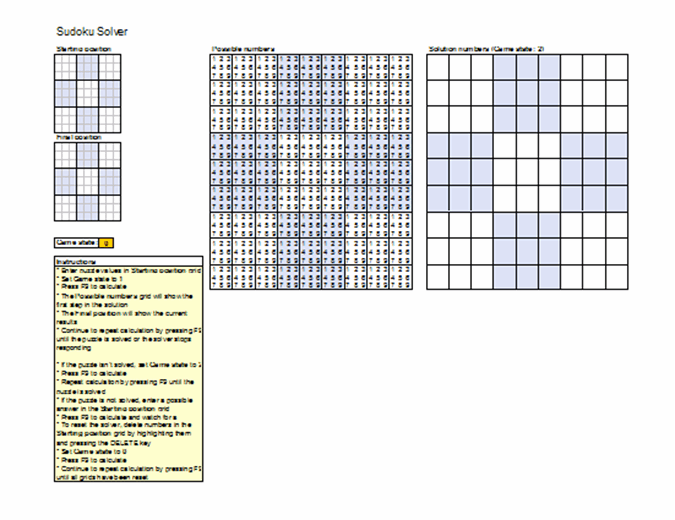
If these candidates are found in other cells in the group they can be excluded. The cells which make up a Naked Triple don't have to contain every candidate of the triple. The same principle that applies to Naked Pairs applies to Naked Triples & Naked Quads.Ī Naked Triple occurs when three cells in a group contain no candidates other that the same three candidates.

Therefore, since one of these cells must be the 6 and the other must be the 8, candidates 6 & 8 can be excluded from all other cells in the row (in this case just the highlighted cell). In the example below, the candidates 6 & 8 in columns six and seven form a Naked Pair within the row. These 2 candidates can be excluded from other cells in the group. If two cells in a group contain an identical pair of candidates and only those two candidates, then no other cells in that group could be those values. Therefore, since one of these cells must be a 9 (otherwise the column would be without a 9), 9's can safely be excluded from all cells in this middle box except those in the left column. In the example on the right, the left column has candidate 9's only in the middle box. Since one of these cells must contain that specific candidate, the candidate can safely be excluded from the remaining cells in the box. Sometimes a candidate within a row or column is restricted to one box. Therefore 2 can be excluded as a candidate from the highlighted cells. Since, one of those cells must be a 2, no cells in that row outside that box can be a 2. In the example below, the right box only has candidate 2's in its bottom row. Since one of these cells must contain that specific candidate, the candidate can safely be excluded from the remaining cells in that row or column outside of the box. Sometimes a candidate within a box is restricted to one row or column. The following steps (in increasing complexity) will reduce the number of candidates in blank cells so, sooner or later, a 'single' candidate or 'hidden single' candidate will appear. That's fortunate, otherwise Sudoku wouldn't be as popular as it is today. While the two steps above are the only ones which will directly assign a cell value, they will only solve the simplest puzzles.

Since every box must have a 6, this cell must be that 6. In the example on the right, the candidate 6 is only found in the middle right cell of the 3x3 box. Very frequently, there is only one candidate for a given row, column or box, but it is hidden among other candidates.

(Programs like Simple Sudoku will do this laborious step automatically for you too.) It is very important whenever a value is assigned to a cell, that this value is also excluded as a candidate from all other blank cells sharing the same row, column and box. Only progress to more difficult steps when simpler steps neither reveal new values nor exclude candidates from blank cells.Īny cells which have only one candidate can safely be assigned that value. Repeat the following logical steps until the puzzle is solved.


 0 kommentar(er)
0 kommentar(er)
